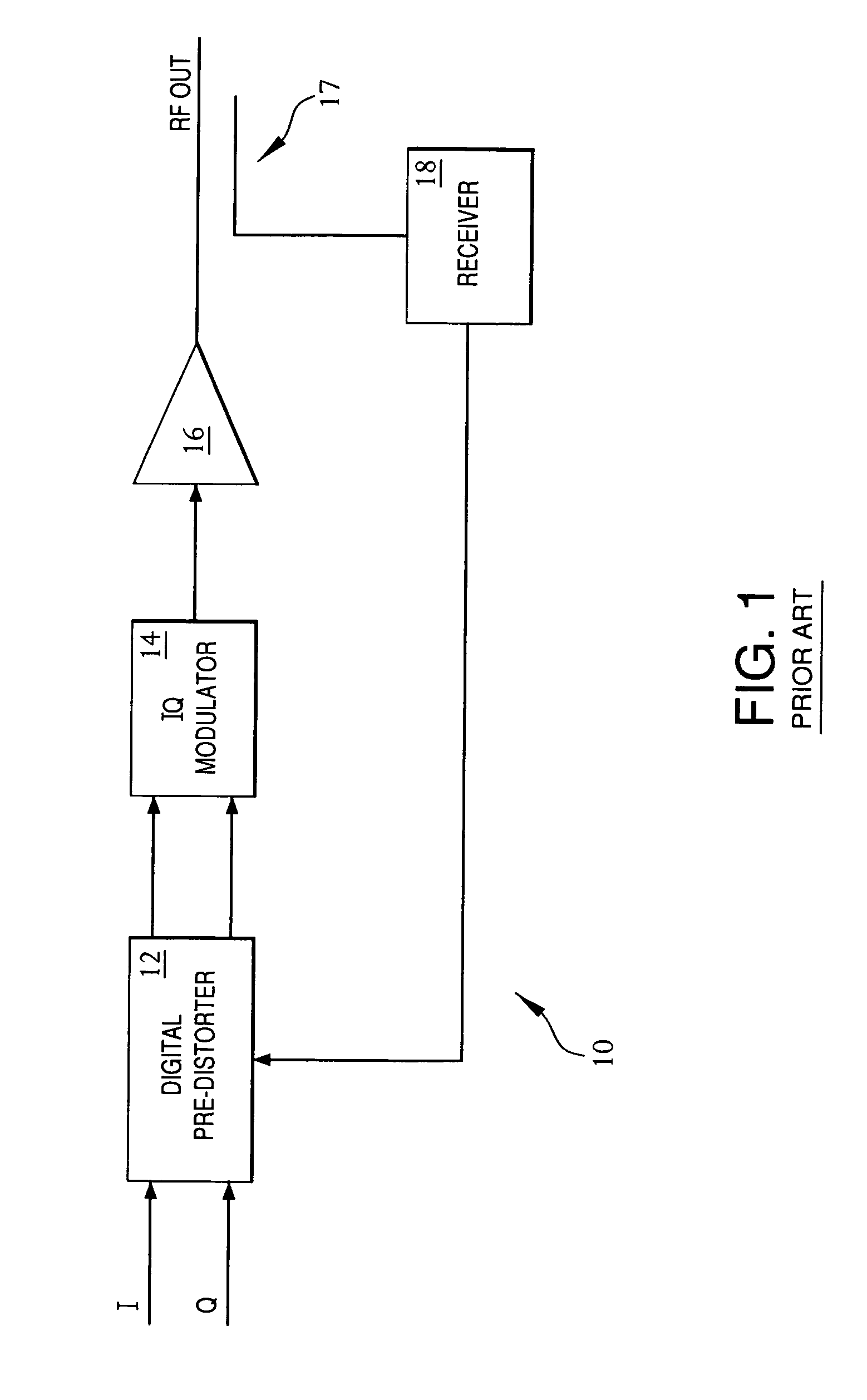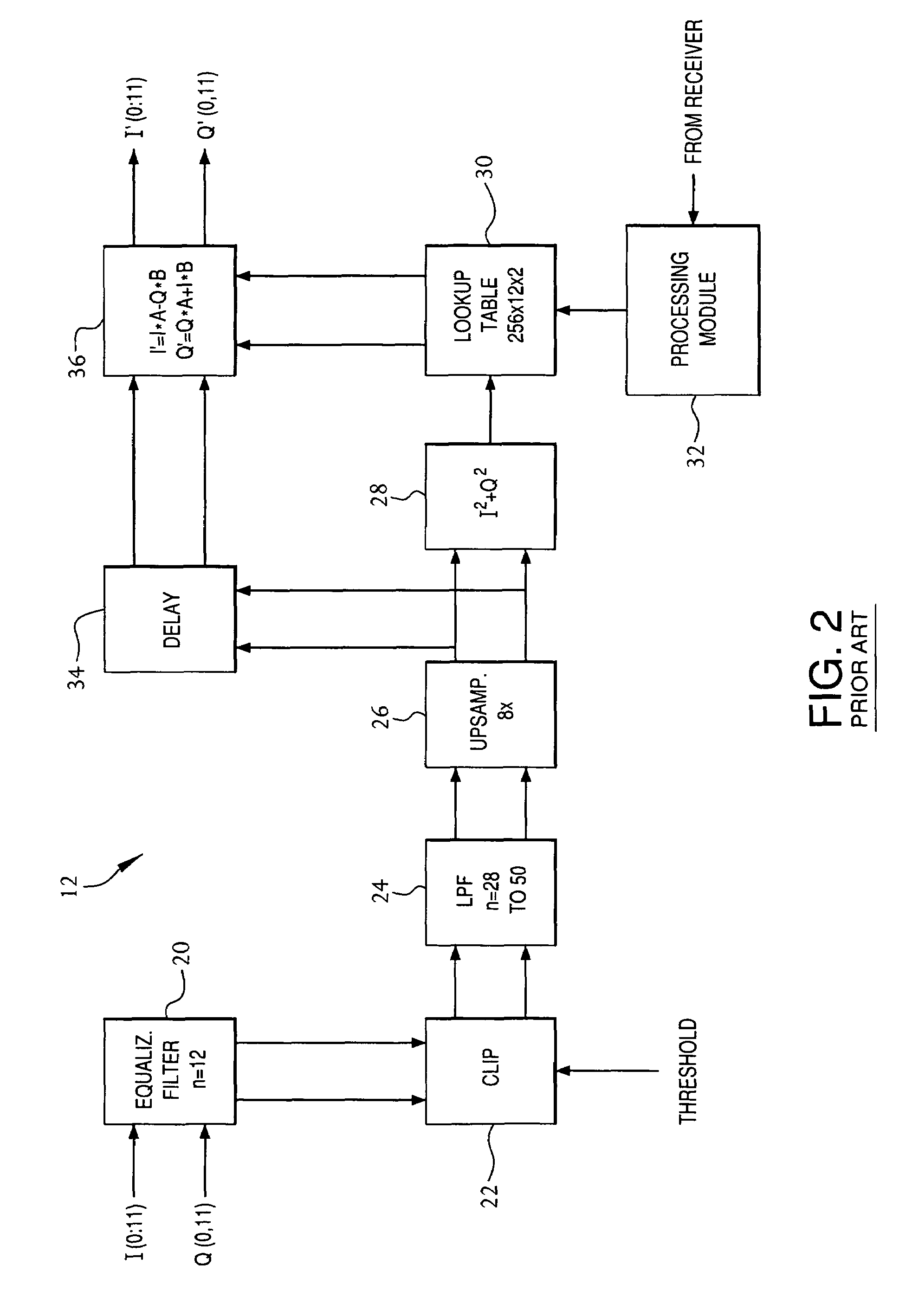Digital pre-distortion for the linearization of power amplifiers with asymmetrical characteristics
- Summary
- Abstract
- Description
- Claims
- Application Information
AI Technical Summary
Problems solved by technology
Method used
Image
Examples
Embodiment Construction
[0014]Embodiments of the present invention are directed to techniques that reduce spurious emissions in wireless communication networks to levels that satisfy current requirements. In particular, embodiments of the present invention involve the application of pre-distortion to an input signal to generate a pre-distorted signal that, when applied, e.g., to an amplifier, results in lower spurious emissions in the resulting amplified signal, where the amplifier has asymmetrical characteristics (e.g., an asymmetry between spurious emissions that occur at frequencies below the center frequency and spurious emissions that occur at frequencies above the center frequency).
Pre-Distortion Technique of the '490 Application
[0015]The '490 application describes a technique for reducing spurious emissions using digital pre-distortion that was sufficient to meet previously existing regulations and standards. According to the '490 application, pre-distortion, whose magnitude and phase are frequency-...
PUM
 Login to View More
Login to View More Abstract
Description
Claims
Application Information
 Login to View More
Login to View More - R&D
- Intellectual Property
- Life Sciences
- Materials
- Tech Scout
- Unparalleled Data Quality
- Higher Quality Content
- 60% Fewer Hallucinations
Browse by: Latest US Patents, China's latest patents, Technical Efficacy Thesaurus, Application Domain, Technology Topic, Popular Technical Reports.
© 2025 PatSnap. All rights reserved.Legal|Privacy policy|Modern Slavery Act Transparency Statement|Sitemap|About US| Contact US: help@patsnap.com



